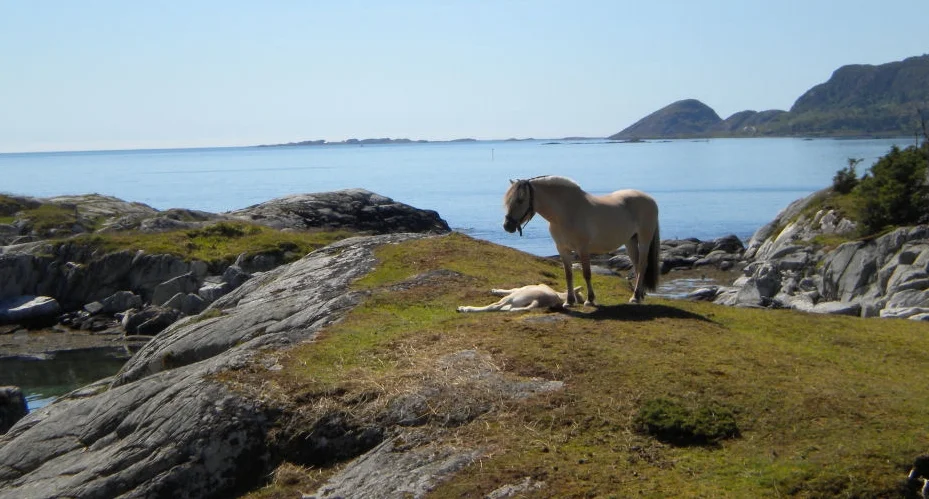Rimfakse - beautiful, but almost creating a disaster for the Fjording breed.
Failure of crossbreeding
Around year 1900 many west-coast farmers started to cross-breed their Fjordings with a different Norwegian breed, the Døla Horse. A popular crossover called Rimfakse was even stationed as county stallion at Breim - in the hearth of the Fjording region. The aim was to breed stronger horses who was even better suited for pulling heavy farming equipment.
This worked fine for a generation or two, but resulted in unfortunate behavior and characteristics on the third and fourth foal. The offspring wasn't longer as reliable, cooperative and mentally strong as the west-coast farmers had been used to.
Njål - the great matador
In 1907 a group of farmers from Nordfjord and Sunnmøre rebelled against the cross-breed and made sure that every horse with Døla-genes was banned from reproduction.
Luckily a few numbers of horses had been spared for the mess. Njål 166 was one of these. He was a county stallion stationed in Stryn and became so popular after the "Rimfakse-rebellion" that upon his death he was accountable for 31 sons and 88 daughters. His great work as matador resulted that he's to be found in the pedigree of EVERY LIVING FJORD HORSE around the world today. Pretty cool, right?
Njål to the left and another popular county stallion, Kåre, to the right.
Securing the breed in the future
In 1996, the European Union’s Convention on Domestic Animals gave Norway the official status as the Fjord Horses’ motherland. This provides Norway with the sole responsibility of supervising and managing domestic and global use and breeding of the Fjord Horse.
Within Norway, the Norwegian Horse Centre funded by the Ministry of Agriculture is leading this work. Alongside the Norwegian Fjord Horse Association and their local member associations rigid breeding guidelines is carried out - securing the breed´s qualities.
Breeding practices of the Fjord Horse outside Norway’s borders are organized through the association Fjord Horse International.
“”Regardless of nation, people in possession of a Norwegian Fjord Horse feels as members of a proud and united family.” ”


